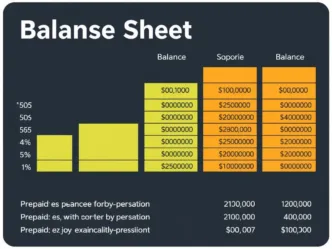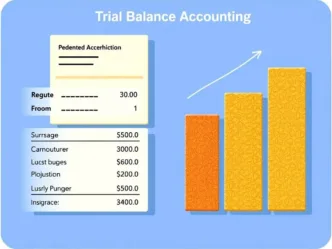Learn the essentials of accounts payable reconciliation, a crucial accounting process for ensuring financial accuracy, preventing fraud, and maintaining healthy supplier relationships. Discover the step-by-step process, common challenges, and how leveraging technology can streamline operations and enhance efficiency.
Understanding Accounts Payable Reconciliation
Accounts payable reconciliation is a fundamental accounting process that involves comparing the outstanding balances on a company’s accounts payable ledger with the corresponding records from suppliers. This reconciliation ensures that the financial records accurately reflect the company’s liabilities and that all transactions correctly recorded. The primary objective is to confirm the accuracy of the accounts payable records, which is crucial for maintaining the integrity of the company’s financial statements.
One of the key principles of accounts payable reconciliation is to identify and rectify discrepancies. Discrepancies may arise from various sources, including data entry errors, payment misapplications, or unrecorded transactions. By regularly performing reconciliations, businesses can detect and address these inconsistencies promptly, thereby preventing potential financial misstatements.
Maintaining a healthy cash flow is another critical aspect of accounts payable reconciliation. By ensuring that all liabilities accurately recorded and paid on time, businesses can avoid late payment penalties and take advantage of early payment discounts offered by suppliers. Accurate accounts payable records also help in forecasting cash flow needs, enabling better financial planning and management.
Reconciliation plays a vital role in fraud prevention and error detection. Regularly reconciling accounts payable helps identify unauthorized transactions, duplicate payments, and other irregularities that could indicate fraudulent activity. This vigilance is essential for safeguarding the company’s assets and maintaining trust with stakeholders.
Moreover, timely and accurate accounts payable reconciliation fosters good relationships with suppliers. Suppliers rely on prompt and accurate payments to maintain their operations. By ensuring that all payments made correctly and on time, businesses can build and sustain healthy supplier relationships, which are crucial for the smooth functioning of the supply chain.
In summary, accounts payable reconciliation is an indispensable process for businesses. It ensures the accuracy of financial records, supports healthy cash flow management, aids in fraud prevention, and helps maintain strong supplier relationships. Regular and thorough reconciliation is essential for achieving financial stability and operational efficiency.
The Reconciliation Process: Step-by-Step
Accounts payable reconciliation is a critical task that ensures the accuracy and integrity of a company’s financial records. The process begins with the gathering of all necessary documents. These include invoices, purchase orders, and payment records. Each document provides a piece of the puzzle that, when correctly assembled, reflects the true financial state of the organization.
The first step is to collect all invoices received from suppliers. It is essential to ensure that every invoice accounted for and that none are missing. Next, gather all purchase orders issued by the company. Purchase orders serve as a reference point, detailing the goods or services requested. Finally, compile all payment records, which document the actual funds disbursed to suppliers. These records confirm that transactions have been executed as per the agreements.
Once all documents collected, the next step is to compare them with the company’s financial records. This involves cross-referencing each invoice with the corresponding purchase order and payment record. The objective is to verify that the amounts match and that all transactions accurately recorded. During this comparison, it is crucial to pay attention to details such as dates, quantities, and item descriptions to ensure consistency across all documents.
Discrepancies are inevitable, and identifying them is a key part of the reconciliation process. Common discrepancies include mismatched amounts, duplicate entries, or missing documentation. When discrepancies are found, they must be investigated thoroughly. This may involve contacting suppliers for clarification, reviewing internal records, or consulting with relevant departments. Addressing these issues promptly helps maintain the accuracy of financial statements and prevents future errors.
Timely updates and corrections are fundamental to an efficient reconciliation process. Regularly updating the accounts payable ledger ensures that all transactions are recorded in real-time, reducing the risk of discrepancies. Best practices include implementing a systematic approach to document management, utilizing accounting software for automated tracking, and conducting periodic reviews to identify and rectify errors promptly.
Incorporating these steps into the reconciliation process not only enhances accuracy but also streamlines operations, saving time and resources. By adhering to these guidelines, businesses can ensure that their financial records are reliable, providing a solid foundation for informed decision-making.
Challenges in Accounts Payable Reconciliation and How to Overcome Them
Accounts payable reconciliation is an essential function for maintaining financial accuracy and operational efficiency within a business. However, this process is fraught with challenges that can impede its effectiveness. One of the most common issues is data entry errors. These errors can occur due to manual input mistakes, leading to discrepancies between the accounts payable ledger and the general ledger. Such inaccuracies can result in financial misstatements, affecting the overall financial health of the organization.
Another prevalent challenge is the presence of missing documents. Invoices, receipts, and other crucial documents can sometimes be misplaced or lost, making it difficult to verify transactions and reconcile accounts accurately. This issue not only hampers the reconciliation process but also poses a risk of non-compliance with audit requirements.
Mismatched records are also a significant hurdle in accounts payable reconciliation. Discrepancies between vendor statements and internal records can arise due to timing differences, incorrect invoice amounts, or duplicate entries. These mismatches can lead to payment delays, strained vendor relationships, and potential financial penalties.
To overcome these challenges, businesses can adopt several strategies. Implementing automated reconciliation tools is one effective solution. These tools can reduce the likelihood of data entry errors by automating the matching process, ensuring that records are consistently accurate and up-to-date. Automation also speeds up the reconciliation process, freeing up staff to focus on more strategic tasks.
Enforcing stringent documentation practices is another crucial measure. Establishing a standardized process for document handling, storage, and retrieval can minimize the risk of missing documents. Utilizing digital document management systems can further enhance accessibility and security, ensuring that all necessary records are readily available for reconciliation.
Training staff on best practices is equally important. Providing regular training sessions on accurate data entry, proper documentation procedures, and reconciliation techniques can empower employees to perform their tasks more efficiently. Educated and well-trained staff are less likely to make errors, thereby improving the overall accuracy of the accounts payable reconciliation process.
Leveraging Technology for Efficient Reconciliation
In today’s rapidly evolving business environment, leveraging technology for accounts payable reconciliation is no longer a luxury but a necessity. Modern software solutions offer a myriad of features designed to streamline the reconciliation process, thereby reducing manual errors and saving valuable time. These tools automate much of the tedious work traditionally associated with accounts payable, allowing finance teams to focus on more strategic activities.
One of the most significant advantages of these technological solutions is real-time data integration. By syncing with various financial systems, these tools provide up-to-date information that enhances the accuracy of reconciliations. Real-time data integration ensures that invoices, payments, and other financial transactions are consistently aligned, minimizing the risk of discrepancies.
Another crucial feature is the automated matching of invoices and payments. This functionality eliminates the need for manual cross-referencing, which is often prone to errors. Automated matching not only speeds up the reconciliation process but also ensures a higher level of accuracy. By automatically flagging mismatches and discrepancies, these tools help identify issues that need immediate attention, thereby facilitating quicker resolutions.
Robust reporting capabilities are also a hallmark of modern reconciliation software. Detailed reports and analytics provide valuable insights into the reconciliation process, highlighting trends, inefficiencies, and potential areas for improvement. These reports can be customized to meet the specific needs of a business, offering a tailored approach to financial management.
When selecting the right technology for accounts payable reconciliation, it’s essential to consider the specific needs of the business. Factors such as the volume of transactions, existing financial systems, and the level of automation required should be taken into account. Conducting a thorough needs assessment will ensure that the chosen solution aligns with the business’s objectives and provides the desired benefits.
The transition from manual to automated reconciliation offers numerous advantages. Not only does it enhance efficiency and accuracy, but it also allows for better compliance and audit readiness. By embracing technology, businesses can achieve a more streamlined and effective accounts payable reconciliation process, ultimately contributing to improved financial management and organizational success.






